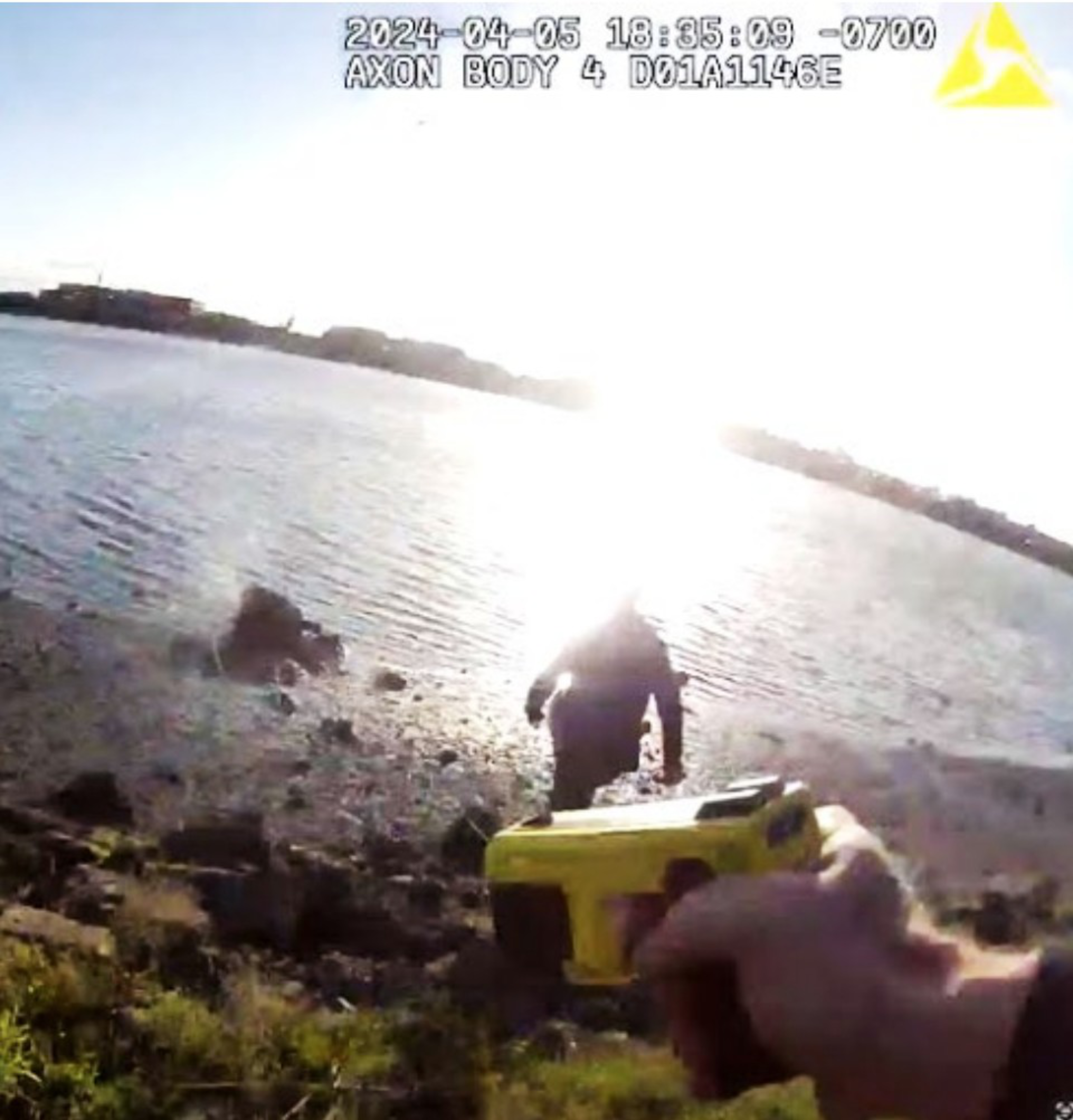A San Francisco man remains comatose six months after East Bay police repeatedly used a Taser on him as he stumbled into cold salt water, according to a federal civil rights lawsuit filed Tuesday.
Officers from the East Bay Regional Park District watched for more than 30 minutes as Deontae Faison, 35, struggled in the water at Oakland’s Martin Luther King Jr. Regional Shoreline following the April 5 confrontation, the lawsuit, filed in U.S. District Court for the Northern District of California, claims.
The violent encounter, which can be seen in part on body-camera footage released by Faison’s attorney, began when a park police officer approached Faison and a friend who were having a picnic. The officer accused Faison of driving a vehicle with expired tags, the lawsuit says. The body-camera footage shows an officer pointing a handgun and screaming at Faison to get out of a pickup truck and sit on the bumper.
Attorneys say Faison, who is Black, became nervous when the officer treated him differently from his white friend and provided an alias when questioned about the truck. When additional officers arrived, Faison fled toward the estuary. The original officer, identified as Jonathan Knea in documents, shot him in the back with a Taser and continued deploying it after Faison plunged into the water, the lawsuit states.
“The officers’ deliberate indifference to Deontae’s life is appalling,” said civil rights attorney Adanté Pointer. “They stood there for over half an hour watching him struggle for his life.”
Officers did not call emergency medical services until after pulling the unconscious Faison from the water, according to the legal filing. Alameda County sheriff’s deputies also stood by while Faison’s life was on the line, the suit claims.
Faison, a father of two, has remained unresponsive at Alameda Hospital since the incident.

The lawsuit also accuses officers of attempting to conceal evidence by turning off body-camera audio, disposing of Taser components and Faison’s clothing, and filing allegedly fraudulent reports claiming they believed he was armed.
The lawsuit contends that use of a Taser on a person who is in water violates district policy and manufacturer guidelines — particularly salt water, due to its conductivity. Taser use can cause pain, loss of muscle control, elevated heart rate, and breathing difficulties.
However, a Taser manual says targeting someone in water does not “significantly” increase the electrical shock.
“Exposure to water will not increase the power to the subject,” a Taser user manual (opens in new tab) says. “The delivered electrical charge is fixed inside the TASER energy weapon, and will not increase significantly even with environmental changes.”
A park district spokesperson told The Standard that the district “does not comment on pending litigation.”
